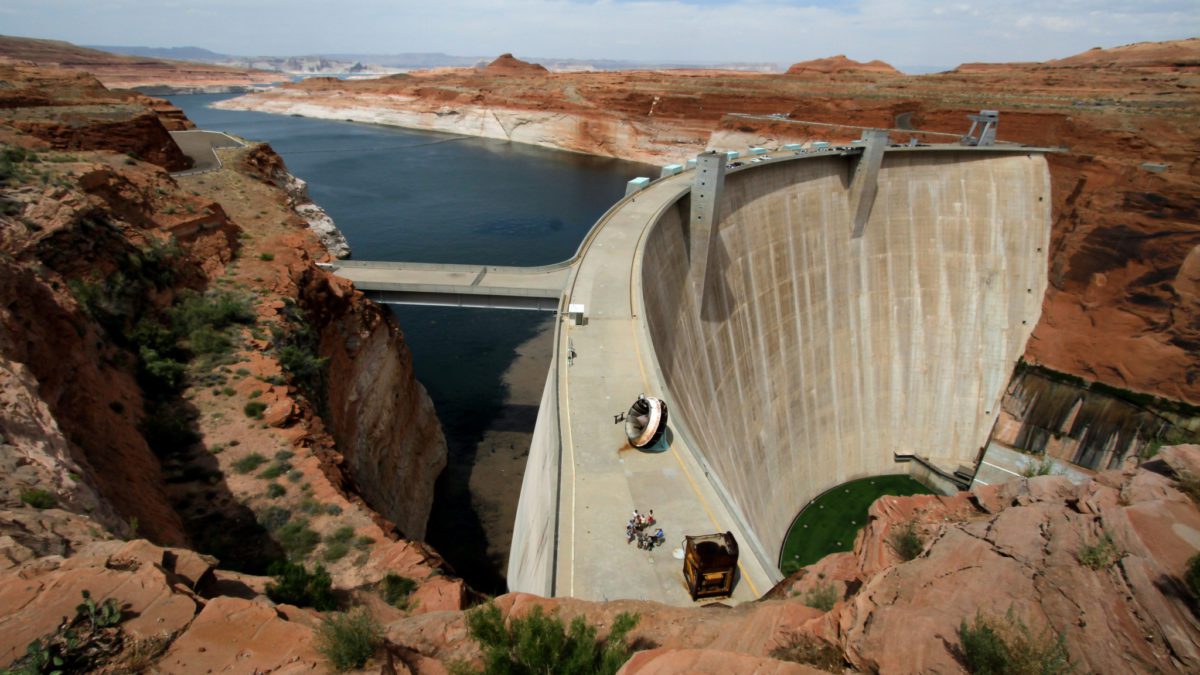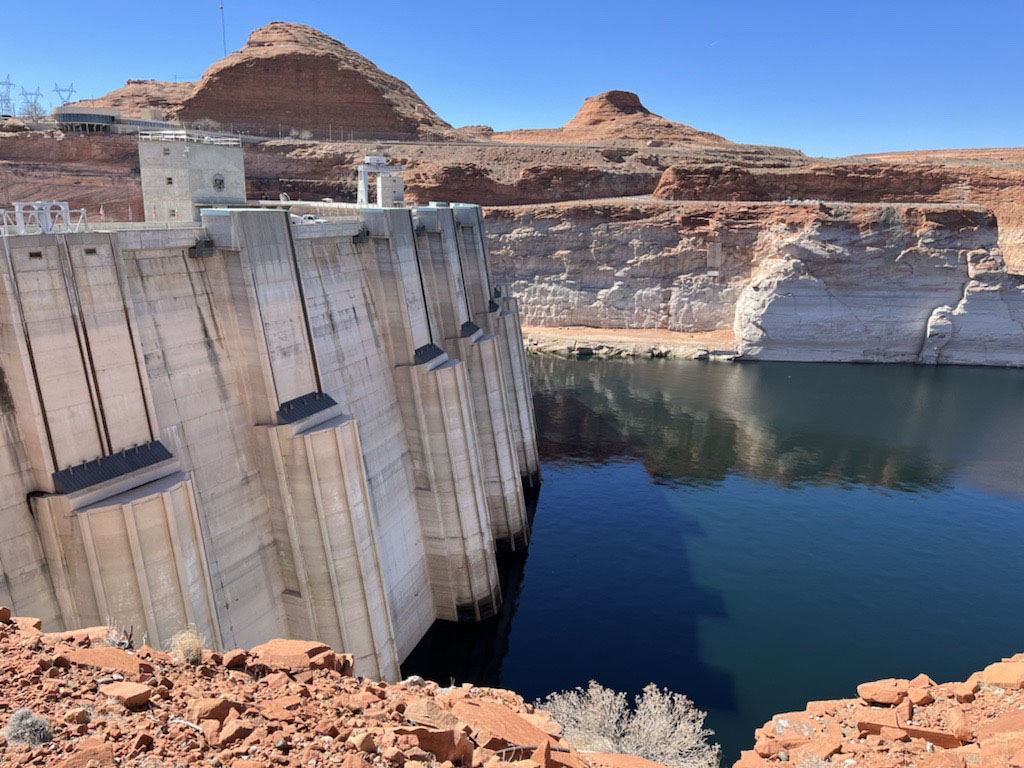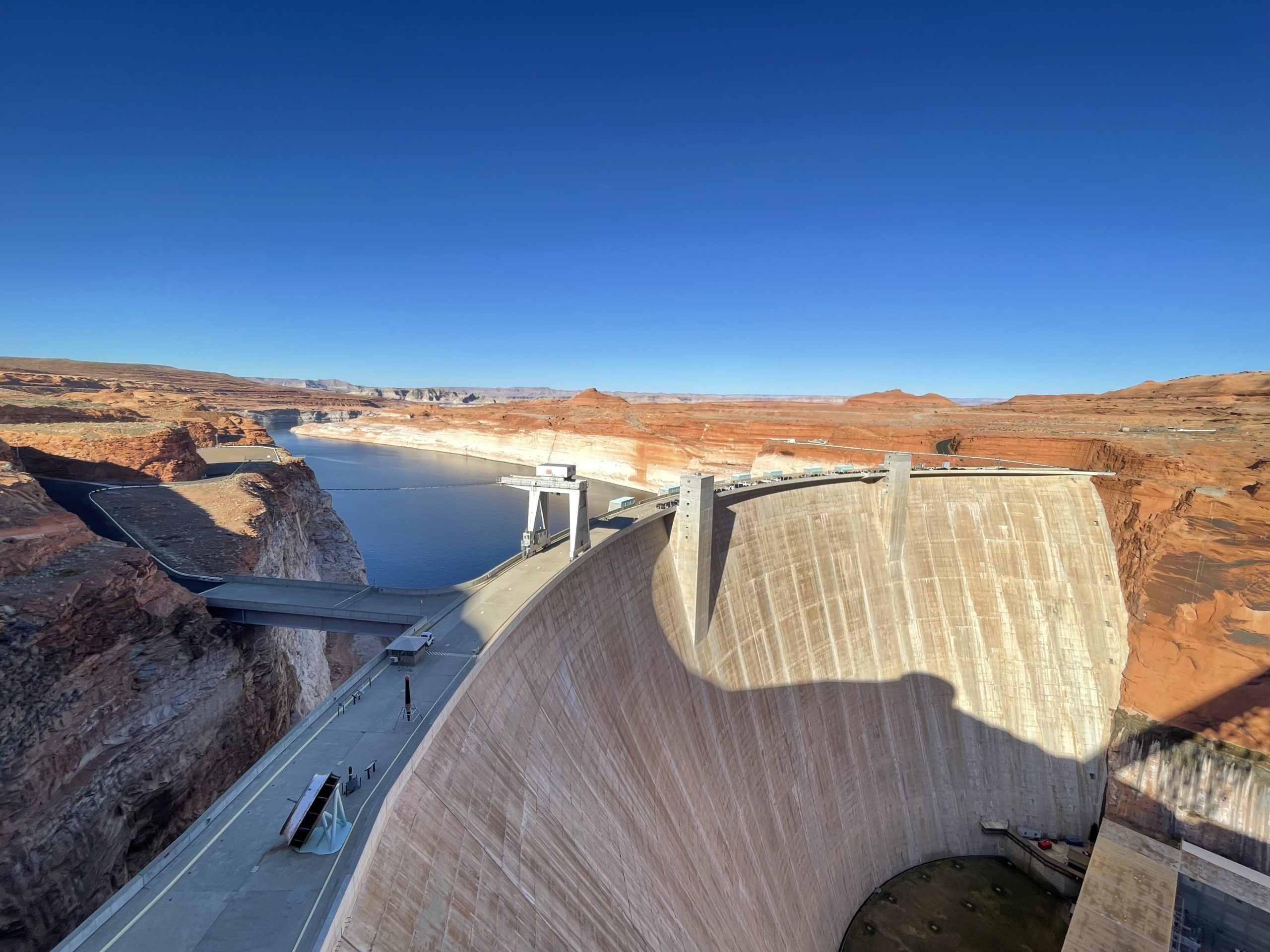Environment
Problems with Glen Canyon Dam could jeopardize water flowing to Western states

The Glen Canyon Dam in May 2014. Photo: Bureau of Reclamation
Environmental groups are calling it 'the most urgent water problem' for the Colorado River and the 40 million people who rely on it
By: Kyle Dunphey, Utah News Dispatch
A new memo from the U.S. Bureau of Reclamation is raising concern about the infrastructure at the Glen Canyon Dam and its ability to deliver water downstream should levels at Lake Powell continue to decline.
Environmental groups are calling it “the most urgent water problem” for the Colorado River and the 40 million people who rely on it.
Water stored at Lake Powell, the country’s second largest reservoir, typically moves through the Glen Canyon Dam hydropower turbines — the Glen Canyon Power Plant produces about 5 billion kilowatt hours of power each year, distributed to Utah, Wyoming, Colorado, New Mexico, Arizona, Nevada and Nebraska, according to the Bureau of Reclamation.
Below the turbines are the dam’s river outlet works, a separate set of steel pipes originally designed to release excess water. If Lake Powell were to drop below the elevation of 3,490 feet, the outlet works would be the only way to convey water through the dam and downstream to the 30 million people and billion-plus dollar industries that rely on the lower Colorado River basin.
In February 2023, lake levels reached an all-time low of 3,521.95 feet, nearly 30 feet away from forcing the bureau to use the outlet works.
We call this the biggest problem in the Colorado River basin. – Zach Frankel, executive director of the Utah Rivers Council
But a March 26 memo from the Bureau of Reclamation suggests those outlet works aren’t as reliable as previously thought.
“There are concerns with relying on the river outlet works as the sole means of sustained water releases from Glen Canyon Dam,” the memo reads, noting that the bureau should “not rely” on the outlet works to release water downstream.
Without upgrades to the dam’s infrastructure, the bureau’s ability to get water downstream to the lower Colorado River basin as required by the Colorado River Compact could be in jeopardy. Even after record-breaking snowfall in 2023 and an above average 2024 winter, Lake Powell remains at about 32% full, according to data from the bureau. And scientists estimate flows in the river have decreased by roughly 20% over the last century, with warming temperatures resulting in a 10% decrease in runoff.
“We call this the biggest problem in the Colorado River basin,” said Zach Frankel, executive director of the Utah Rivers Council. “What is the chance Lake Powell drops below the hydropower turbine level in the next 10 years? If you ask me, I would say it’s almost guaranteed. We just had the biggest runoff in 40 years in the Colorado River basin a year ago. It’s only been a year since the biggest runoff in almost four decades and Lake Powell is still only at 32% capacity.”
The Bureau of Reclamation’s findings come after officials recently used the outlet works to deliver more water downstream, an effort to boost ecosystems and study the ecology and hydrology of the Colorado River. The outlet works experienced cavitation, which according to the bureau, is a result of bubbles forming in high velocity flows that can damage or erode coatings, concrete and steel. Repairs could include adding a new epoxy lining to the outlet works, which the bureau has scheduled for later this year. Or even a river-level bypass system, which the Utah Rivers Council has advocated for, allowing water to flow around the dam.
“If we drop everything to solve it, the solution will still take 10 years to implement — so why are we procrastinating?” said Eric Balken, the executive director of Glen Canyon Institute.
The cavitation means the outlet works currently can’t sustain the volume of water required to pass through the dam and deliver the roughly 9 million acre-feet of water allocated to California, Arizona, Nevada and Mexico, should Lake Powell drop below 3,490 feet.
And if the lower basin doesn’t get its water, it could unravel an already tense situation in the drought-plagued region. Frankel said it could lead to litigation among states, the lower basin demanding the upper basin make substantial cuts, or a depletion of reservoirs in Utah and other upper basin states. The economic impact of not delivering water to the lower basin could have far-reaching ripple effects, possibly reducing agricultural production, impacting urban growth and damaging recreation.
“This is a big problem that 1 in 8 Americans needs to have resolved,” Frankel said.
Water managers from Colorado River basin states are currently working on new management plans ahead of 2026, when current guidelines are set to expire. The states have yet to reach an agreement, but Kyle Roerink, executive director of the Great Basin Water Network, said the issues identified at the Glen Canyon Dam should be a part of the planning process.
“The Bureau has procrastinated solving Glen Canyon Dam’s plumbing problems long enough. This urgent problem needs to be solved ASAP, during the current Interim Guideline process,” Roerink said in a statement.


















